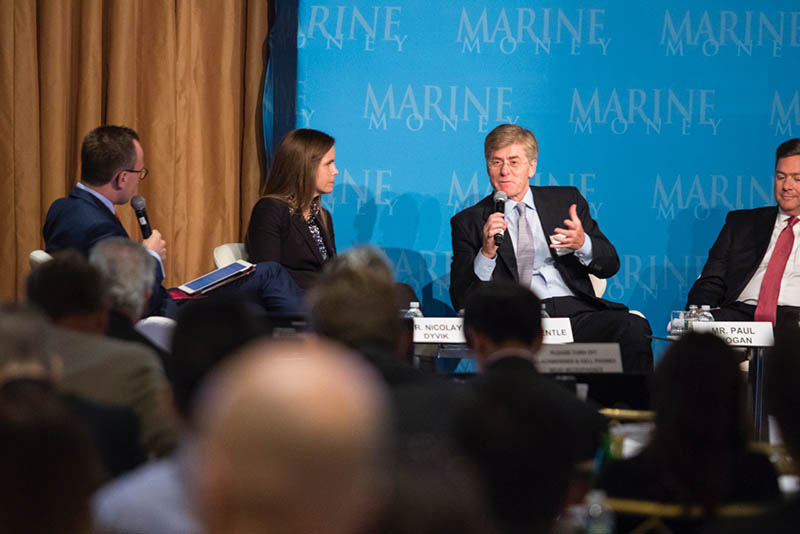Liquified natural gas (LNG) was the main topic during the first day of the 30th annual Marine Money Week conference in New York on Monday.
In particular, the story of increasing tonnages of LNG available for international shipping is especially buttressed by the expected growth in U.S. export capability. Presenter Jefferson Clarke, head of LNG commercial analytics at U.K.-based shipbroker Poten & Partners Ltd., suggested that worldwide trades in LNG might grow to 294 million metric tons in 2017, after tepid growth during 2011 to 2016. U.S. exports, which came to life in 2016 with Cheniere Energy’s Sabine Pass LNG terminal, are still in its relative infancy. Even so, Clarke noted that cargoes are “already going further afield than we thought” and that tonnages could reach between 46 and 50 million tons of LNG over the next five years, once already green-lighted projects come online. The dynamics of the trades are changing and patterns of merchandizing the cargoes are evolving, moving through spot sales to diverse and far-flung destinations including in Asia, rather than being tied to fixed contracts.
There is a growing demand for clean energy, with “LNG becoming a growing strategic component of the global clean energy future,” Clarke said. Reading between the lines of the LNG presentations, the subtext of a supply chain becoming steadily more efficient was an important theme. Consider the deep-sea LNG vessels now being delivered with tri-fuel engines. Jonathan Cook, CEO of shipowner FlexLNG, said the reduced operating cost of the engines, which can burn LNG, heavy fuel or diesel fuel, leads to a lower transport costs. This further expands the scope of LNG penetration into energy markets.
At the receiving end, the growing fleet of floating storage and regasification units (FSRUs) means that consumers can source cargoes without building expensive regasification facilities. Cargo is offloaded into the FSRU which in turn will feed the local grid, said Sveinung J.S. Støhle, president and CEO, Hoegh LNG AS.
Though Cheniere’s facility is up and running and others are at various stages of construction (having gained requisite approvals and lined up funding), plans are in the works for additional liquefaction along the Gulf Coast. The plans from a new player, Tellurian Inc., were discussed by its president and CEO, Meg Gentle. In her presentation, she stressed the company’s aim of “establishing a new global standard for sourcing low-cost natural gas and delivering low-cost LNG to our customers.” This, she said, is in line with the company’s strategy of a “low-cost LNG provider capable of optimizing an integrated value chain.” If all goes according to plan, Tellurian (with a Nasdaq listing, and investment from a group that includes Total, Bechtel and GE) will export from its Driftwood LNG terminal on the Calcasieu River near Lake Charles, La. The terminal will have an annual capacity of 26 million tons a year
In an afternoon filled with multiple slide decks, one graph from Gentle’s presentation on cost comparisons stood out. It revealed that the capital cost of new export facilities in the U.S. Gulf to be about $500 to $700 a ton. This is quite attractive compared with plants closer to the huge Asian markets, including Chevron’s Gorgon project in Australia, at nearly $2,500 per ton.





